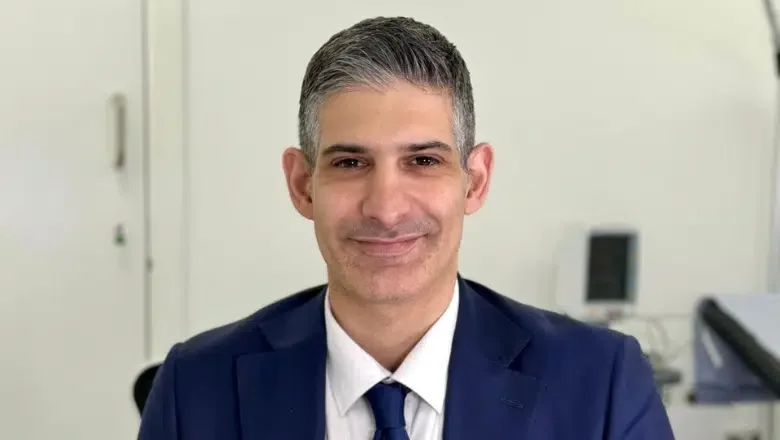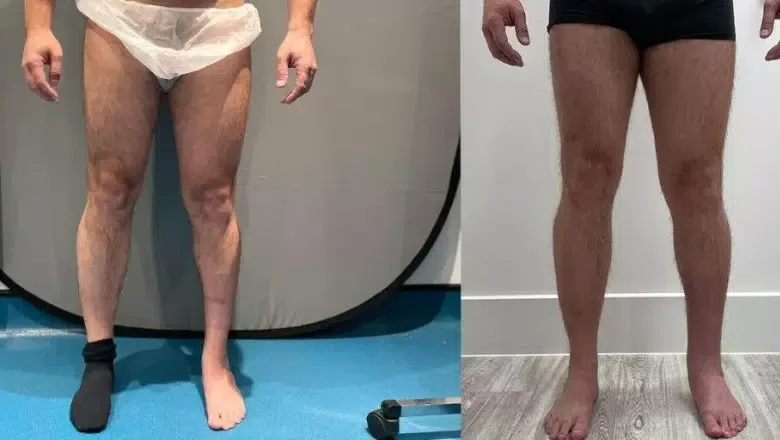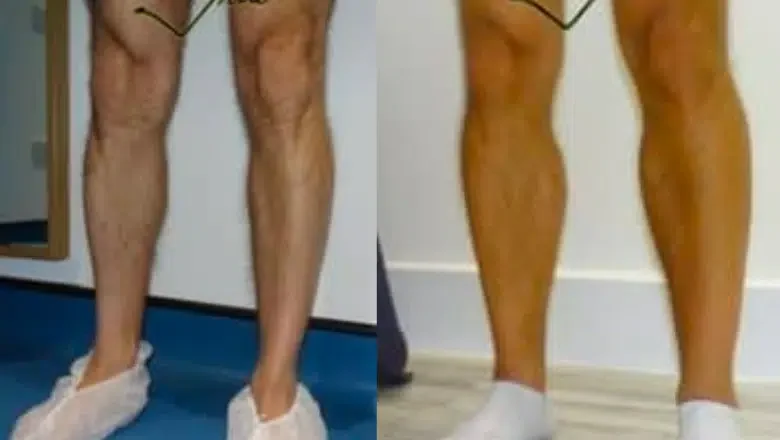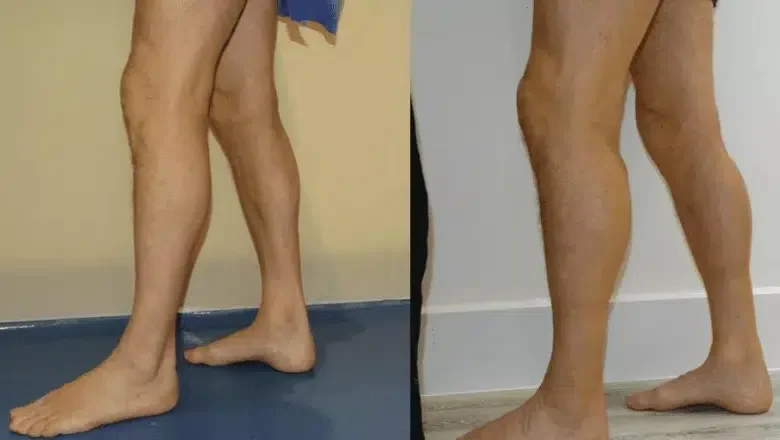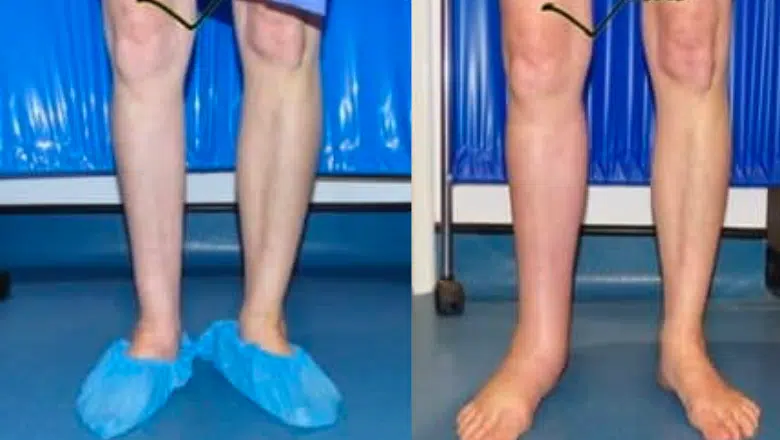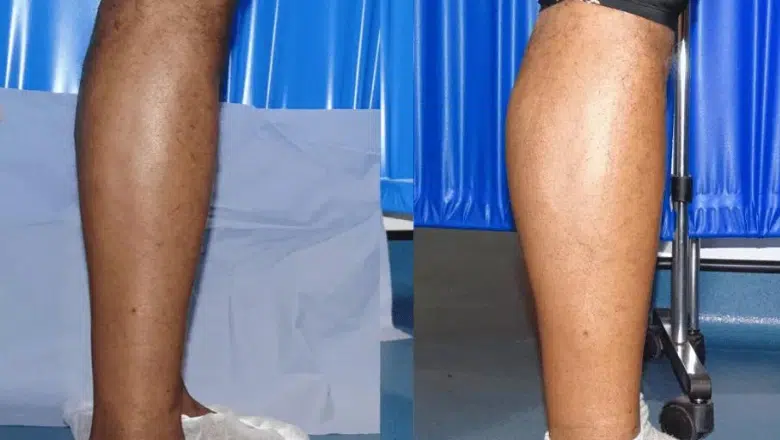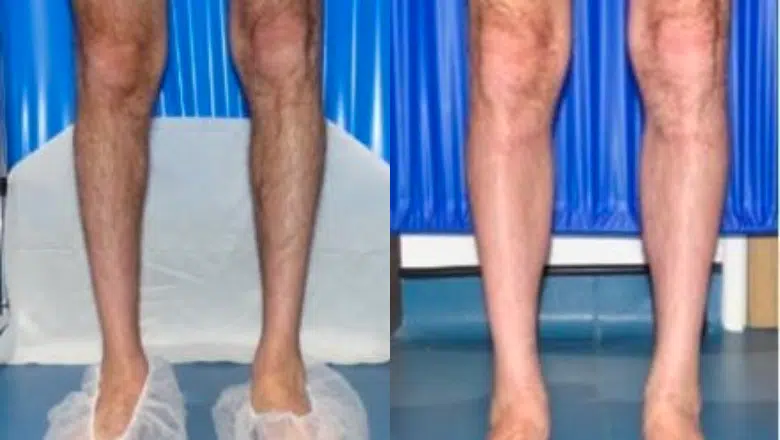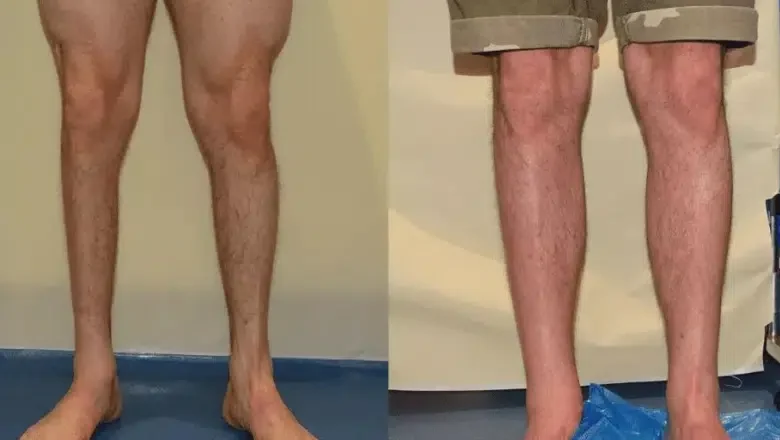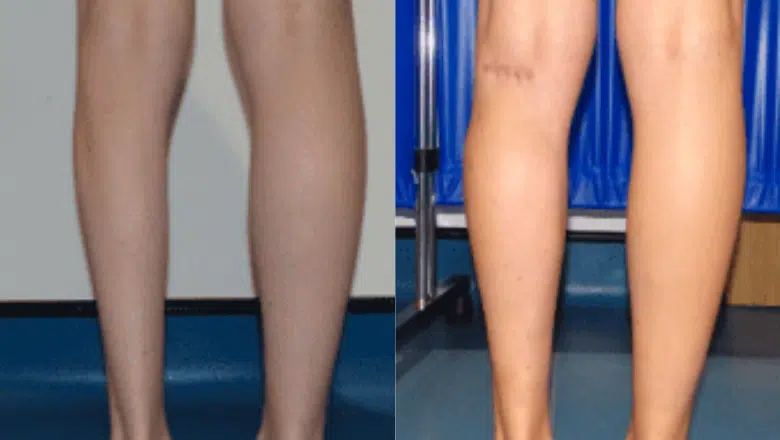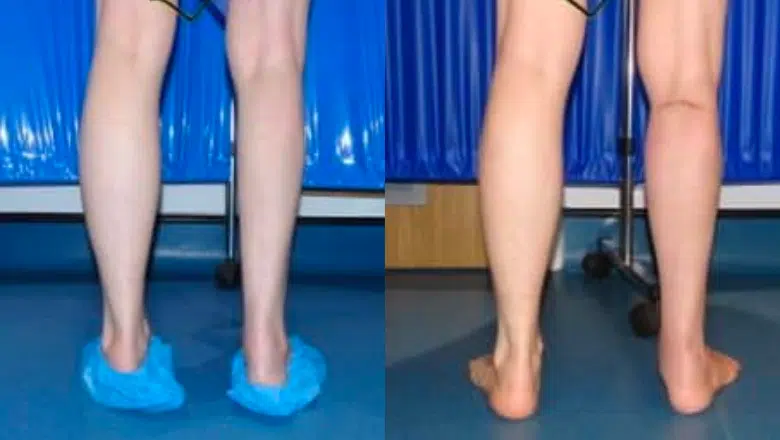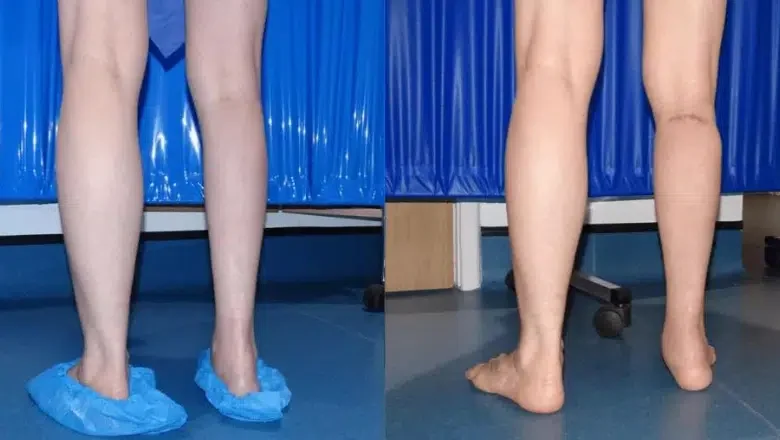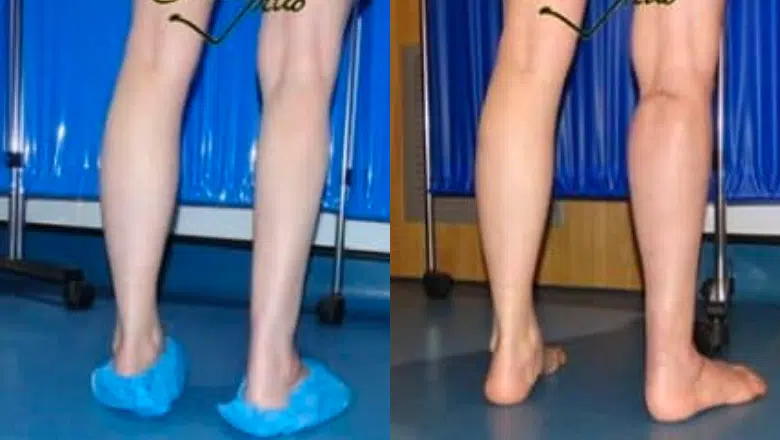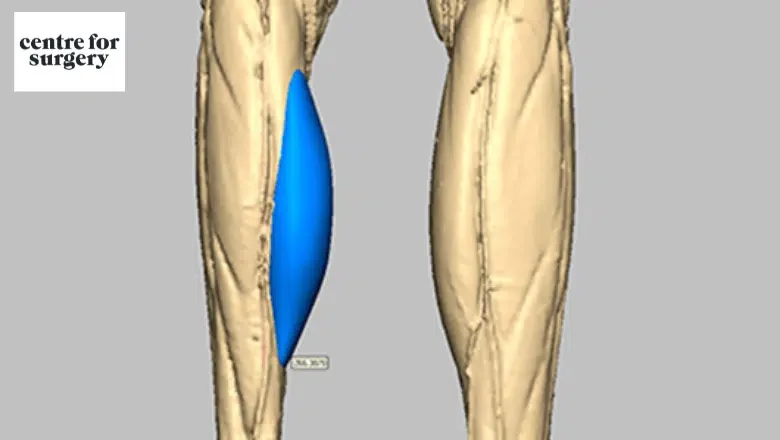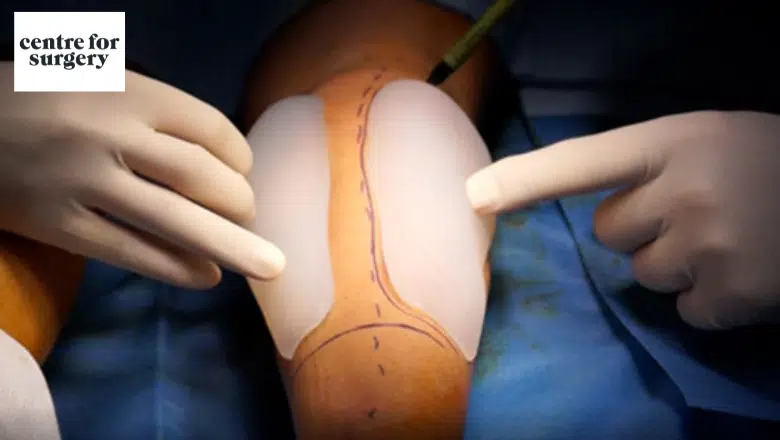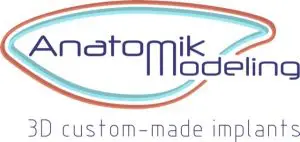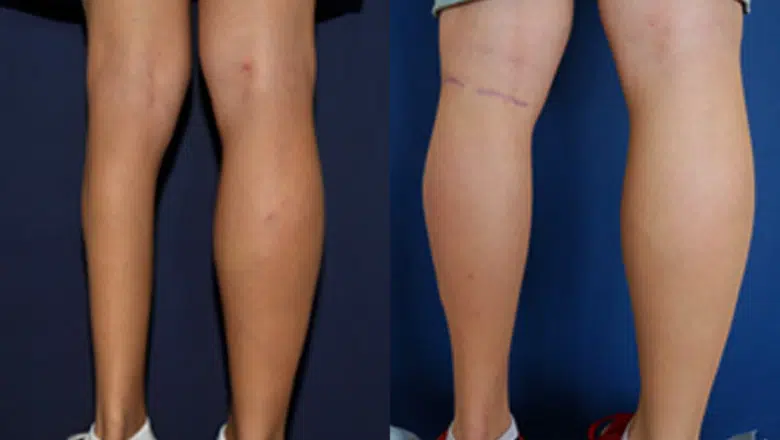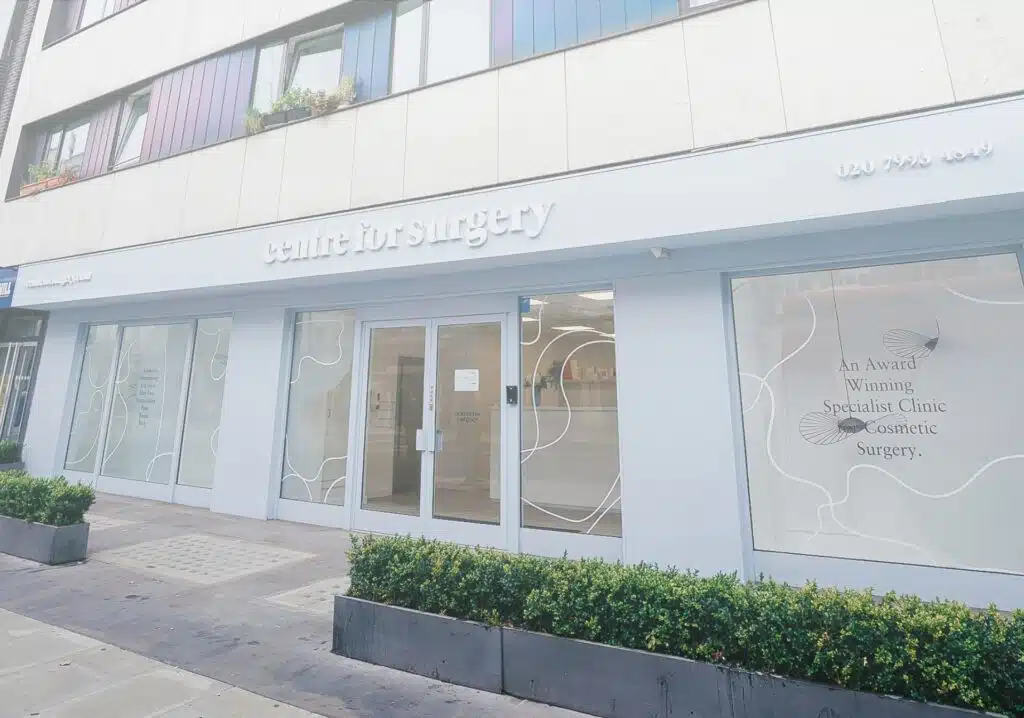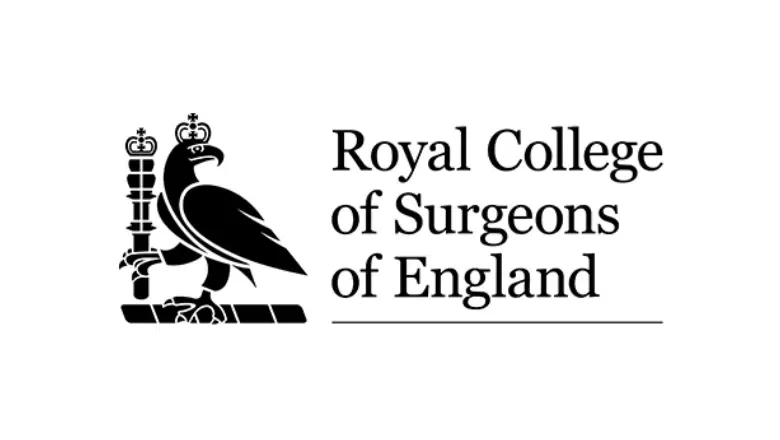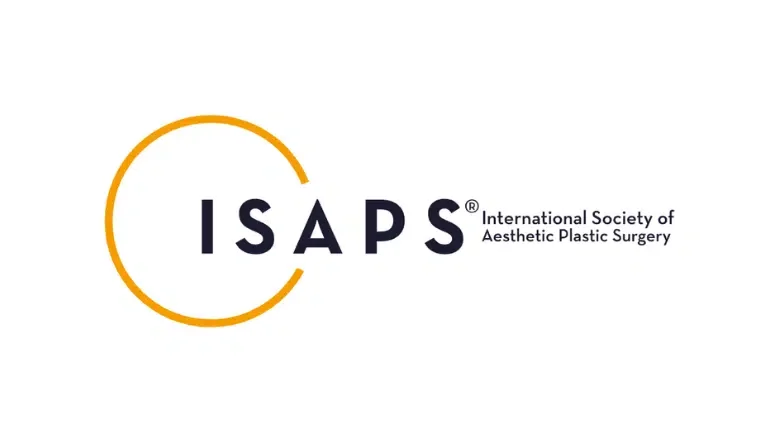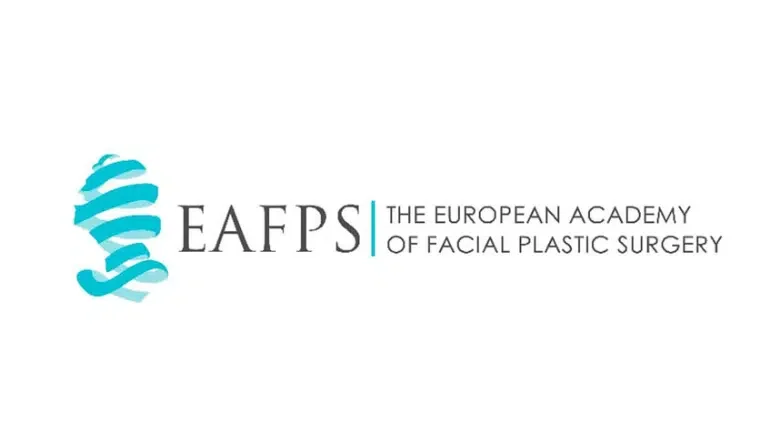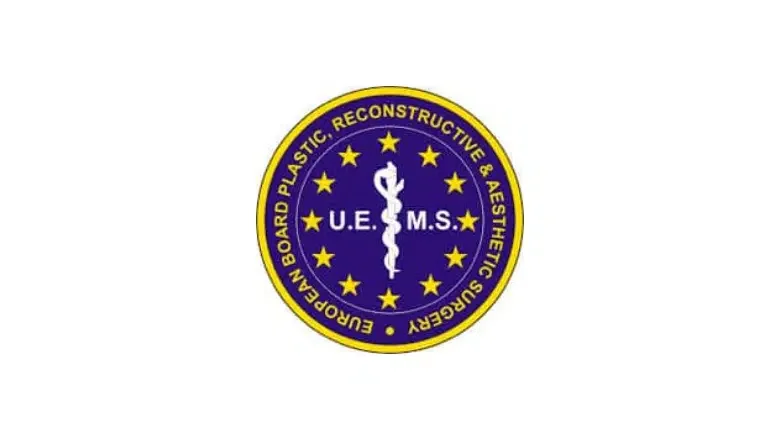Calf Augmentation with Implants in London
 Achieve sculpted, well-defined calves with our calf implant surgery, designed to enhance your lower leg contours and boost your confidence with a natural-looking, proportionate appearance
Achieve sculpted, well-defined calves with our calf implant surgery, designed to enhance your lower leg contours and boost your confidence with a natural-looking, proportionate appearance
Calf implants are specially designed silicone devices that increase the definition, size, and shape of the lower leg. Crafted from firm yet flexible solid silicone, they are carefully placed within the calf area during a surgical procedure. The material is chosen for its durability and natural feel, allowing the implant to blend seamlessly with the existing muscle and tissue, giving the appearance of fuller and more proportionate calves.
This type of surgery is most often chosen for aesthetic reasons, as many people feel their calves appear too small or out of balance with the rest of their body. By adding volume and contour, implants can create a stronger, more athletic look. In addition to cosmetic enhancement, calf implants are sometimes used to restore muscle volume that may have been lost due to injury, illness, or congenital conditions, helping individuals regain confidence in the appearance of their legs.
Anyone thinking about calf implants should take time to consider both the benefits and possible risks of surgery.
At Centre for Surgery in London, we offer advanced calf implant procedures carried out by leading specialists in the field. Our Baker Street hospital is designed for patient comfort and safety, and every treatment is tailored to your individual goals. From your first consultation to aftercare, our team is dedicated to providing expert guidance and outstanding results.
Dr Metin Nizamoglu - Specialist Plastic Surgeon
Dr Metin Nizamoglu is a highly skilled plastic surgeon with expertise in both calf augmentation using silicone implants and fat transfer techniques. His background in aesthetic and reconstructive surgery allows him to offer patients a choice between these two advanced methods, depending on their individual needs and desired results.
Dr Nizamoglu’s approach is centred on precision, balance, and achieving results that look harmonious with the rest of the body. Every treatment plan is carefully tailored, with a focus on understanding the patient’s goals and ensuring a safe and effective outcome.
Anatomy of the calf muscles
The calf muscles, also known as the gastrocnemius and soleus muscles, are a group of muscles located in the lower leg. The calf muscles are responsible for the movement of the ankle and foot and play a critical role in activities such as walking, running, jumping, and standing.
The gastrocnemius is the larger and more visible of the two calf muscles located on the upper part of the calf. It is a two-headed muscle that originates from the femur bone and inserts into the heel bone (calcaneus). The gastrocnemius muscle is responsible for plantar flexion, which is the movement of pointing the toes away from the body.
The soleus muscle is a smaller, flat muscle that lies underneath the gastrocnemius. It also originates from the femur bone but inserts into the heel bone via a tendon that runs behind the ankle joint. The soleus muscle works in conjunction with the gastrocnemius to produce plantar flexion and also helps to maintain posture and balance when standing.
Both the gastrocnemius and soleus muscles work together to control ankle and foot movement and are essential for a wide range of physical activities. Stretching and strengthening exercises for the calf muscles can help to improve their flexibility, strength, and overall function.
What is Calf Implant Surgery?
Calf implant surgery, also known as calf augmentation, is a cosmetic procedure aimed at enhancing the shape, size, and overall appearance of the calves. It is typically performed on individuals who desire a more defined and muscular calf contour, which can be difficult to achieve through exercise alone. The procedure is popular among both men and women seeking to improve the proportions of their lower legs and boost their self-confidence.
Calf implant surgery involves the placement of specially designed, solid silicone implants into the calf muscles, specifically the gastrocnemius muscle, which is the primary muscle responsible for the curved appearance of the calves. These implants are made of durable, biocompatible materials that are designed to mimic the feel and appearance of natural muscle tissue.
Calf Augmentation with Implants Before & After Photos
Case 1:
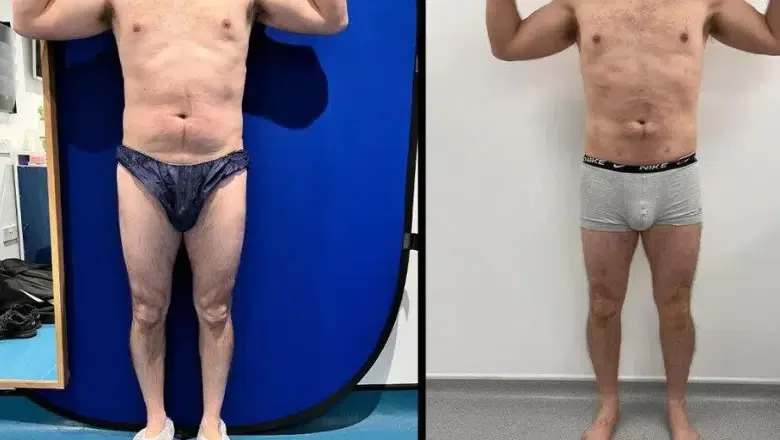
Case 2:
Case 3:
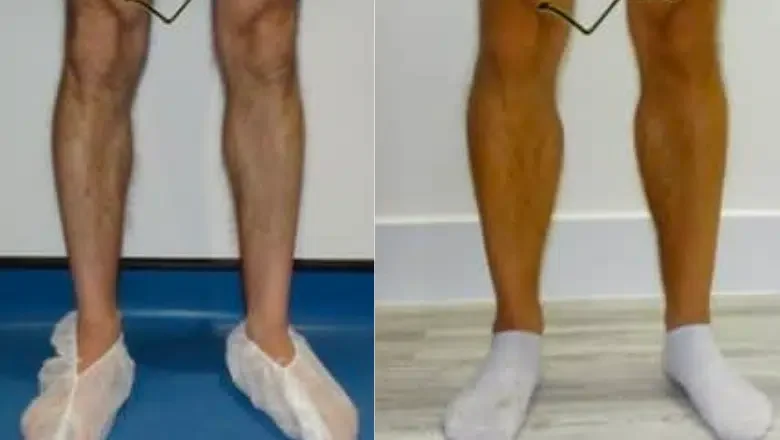
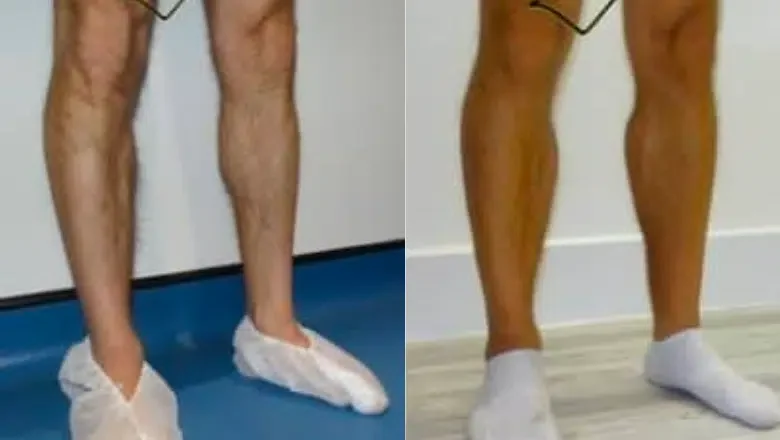
Case 4:
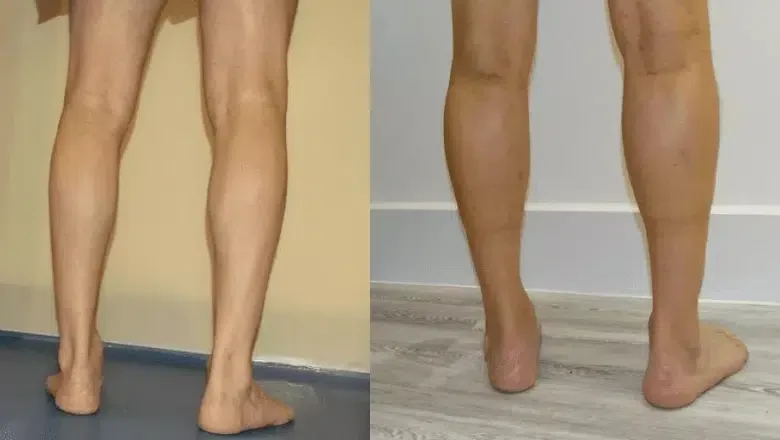
Case 5:
Case 6:
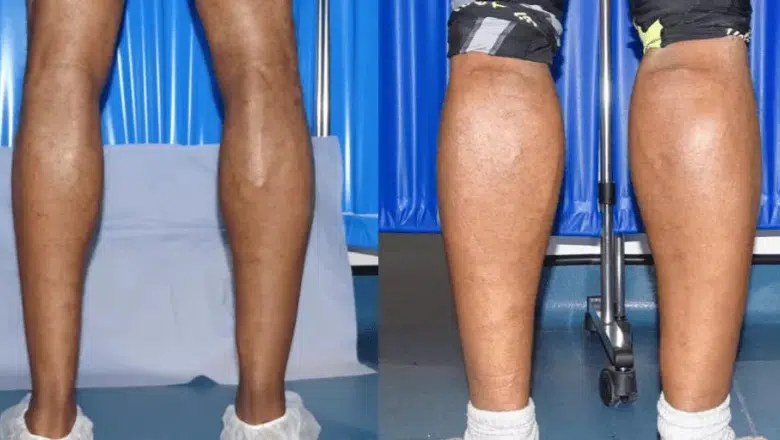
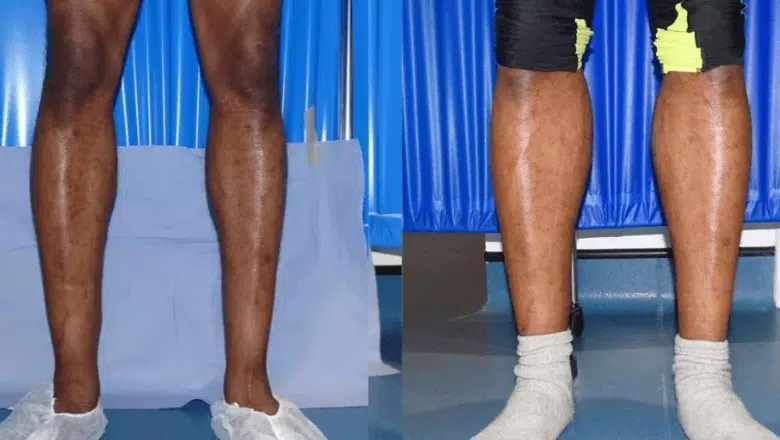
Case 7:
Case 8:
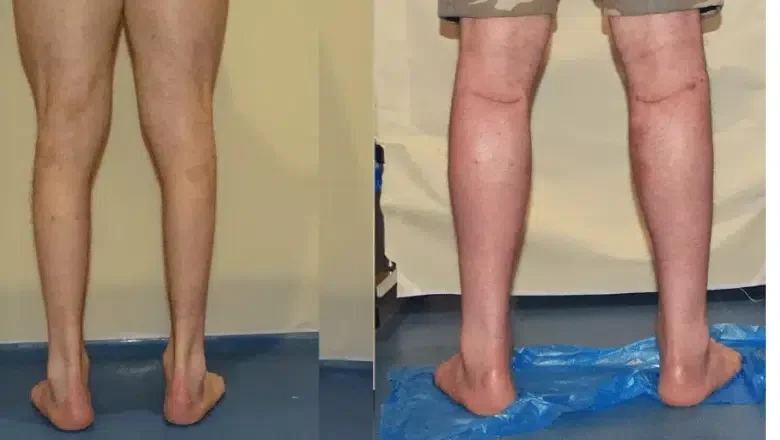
Case 9 (left-sided calf augmentation):
Case 10 (right-sided calf augmentation:
Benefits of calf augmentation
Calf augmentation with implants allow you to have more toned, larger calf muscles, without having to spend endless hours working out and increasing your diet. Calf muscles are one of the most difficult areas to tone and gain muscle mass, and sometimes exercise and diet will make no difference. Some people may even have underdeveloped calves due to a birth defect, injury or simply from ageing.
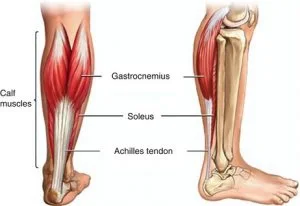
Modern implants use a silicone implant to increase the size and shape of your calves. Once inserted, the implant should feel the same as a natural calf muscle will. The implants can be custom made to ensure you have the muscle size you desire.
Why do people get calf implants?
Lack of definition
Some people have naturally thin or underdeveloped calf muscles, leading to a lack of definition in the lower leg. Calf implants can provide the appearance of a more defined and muscular calf.
Injuries or deformities
Certain injuries or congenital deformities can result in asymmetry or deformities in the calf area. Calf implants can help to restore symmetry and improve the appearance of the affected leg.
Body dissatisfaction
Many people are dissatisfied with the appearance of their legs and feel that they are too thin or too small. Calf implant surgery can be used to increase the size and volume of the calf, providing a more aesthetically pleasing appearance.
Improved self-confidence
For some people, the appearance of their legs has a significant impact on their self-esteem and confidence. Calf implant surgery can help to improve their self-confidence by providing a more attractive and pleasing appearance.
Calf Implants vs Fat Transfer
Calf augmentation with implants and fat transfer are two different procedures used to enhance the appearance of the calves. Both procedures have their own advantages and disadvantages, and the best option for you will depend on your individual goals and needs.
Calf Implants
Calf implants are made of silicone and are designed to add volume to the calves. They are inserted through incisions in the back of the knee and are positioned over the calf muscles. Calf implant surgery is a permanent solution for adding volume to the calves, but the incisions used to insert the implants can result in noticeable scars.
Fat Transfer to Calves
Fat transfer, also known as fat grafting, uses fat from another part of the body to add volume to the calves. Fat transfer is less invasive than calf implants, as it only requires small incisions to remove the fat and re-inject it into the calves. Fat transfer is a more natural-looking option, as the fat used in the procedure is your own tissue, but it is not a permanent solution. Some of the fat used in the procedure may be reabsorbed by the body over time, which may require touch-up procedures to maintain the desired result.
Am I suitable?
The suitability for calf implant surgery depends on several factors and is best determined through a consultation with a qualified plastic surgeon. During the consultation, the surgeon will evaluate your overall health, medical history, and calf anatomy, as well as discuss your goals and expectations for the procedure.
Good candidates for calf implant surgery are typically:
- In good physical health
- Non-smokers, as smoking can impair healing
- Individuals with realistic expectations for the outcome of the procedure
- Individuals with sufficient calf muscle mass, but who are seeking to increase the size or improve the shape of their calf muscles
- Individuals who are dissatisfied with the appearance of their calf muscles due to injury, disease, or congenital defect
Additionally, the surgeon will consider any medical conditions that may increase the risk of complications, such as a history of blood clotting disorders, poor wound healing, or an autoimmune disease.
Calf implant surgery is a cosmetic procedure and is not recommended for individuals who have a significant medical condition or who are unable to tolerate general anaesthesia.
Do calf implants come in different materials and sizes?
Yes, calf implants come in different materials and sizes.
Calf Implant Materials:
Calf implants are typically made of silicone, a soft, flexible material that is well tolerated by the body. Silicone implants are designed to mimic the feel and movement of natural calf muscles. Some calf implants are also made of other materials, such as polyurethane foam or Gore-Tex, but silicone is the most commonly used material.
Calf Implant Sizes:
Calf implants come in a range of sizes to accommodate different calf sizes and shapes. The size of the implant is determined by the individual’s existing calf size and the desired final result. The implant size can also be customised to achieve a natural-looking result.
The surgeon will evaluate the individual’s calf size and shape, take into account their goals for the procedure, and choose the implant size that is best suited for their needs. The surgeon will also ensure that the implant size is suitable for the individual’s body type and that it will yield a natural-looking result.
Calf implants are available in a range of sizes and materials, allowing for customisation and flexibility in achieving the desired final result. The choice of material and size will depend on the individual’s specific needs and goals for the procedure.
Calf implant placement options
- One implant in one leg
- Two implants in one leg
- One implant in each leg
- Two implants in both legs
- Custom-made implant using CAD-CAM technology (special order from Anatomik Modelling)
Calf implants can help achieve improved proportions with the rest of your body, particularly the knees and ankles. As calves are such a prominent part of the body that is often on display, this procedure can effectively boost patients’ confidence and self-esteem.
3D custom designed calf implants for calf atrophy
Calf atrophy, or the loss of muscle volume in the lower leg, can result from various congenital or acquired conditions. Treatment options for calf atrophy may include physical therapy, orthotic devices, or custom-made implants. In cases where the primary concern is cosmetic, custom-made calf implants may provide an effective solution for improving the appearance and symmetry of the lower legs.
Here are some steps to consider when treating calf atrophy with custom-made implants:
Imaging and measurements
Your surgeon will take detailed measurements and imaging of your legs using techniques like 3D scanning or MRI to create a precise model of your anatomy. This information will be used to design a custom-made implant that fits your unique anatomy and addresses calf atrophy.
Implant fabrication
The custom-made implant will be created using biocompatible materials, such as silicone or porous polyethylene, which have been extensively tested for safety and efficacy. The implant will be designed to mimic the shape and texture of your natural calf muscles, ensuring a realistic appearance.
Surgical procedure
The implant will be surgically inserted into a pocket created beneath the skin and fascia of the affected calf. The surgeon will make an incision, typically in a natural skin crease, to minimise visible scarring. The implant will be positioned to provide optimal symmetry and balance with the unaffected leg.
Recovery and follow-up
Recovery from calf implant surgery generally takes several weeks. You may experience some pain, swelling, and bruising, which can be managed with medications and cold compresses. Your surgeon will provide guidance on when you can gradually resume activities and return to work or school. Regular follow-up appointments will be scheduled to monitor your progress, assess the implant’s positioning, and address any concerns or complications that may arise.
Centre for Surgery is proud to be one of the few providers in the UK to specialise in calf implant surgery for muscle deficiency using 3D custom-designed calf implants from Anatomik Modelling.
3D custom-made silicone implants are computer-designed from a high-resolution CT scan to fit the unique anatomy of each patient. It is considered the gold standard treatment for muscle deficiency resulting in calf atrophy.
3D custom-designed calf implants – real patient results

How to Prepare for Calf Implant Surgery
Preparing for calf implant surgery involves several steps that are important for ensuring a successful outcome. Here are some tips for preparing for the procedure:
Discuss your goals and expectations
Before the procedure, it is important to discuss your goals and expectations with your surgeon. This will help to ensure that you are both on the same page and that the surgeon understands your desired outcome.
Obtain a medical evaluation.
Before the procedure, your surgeon will perform a medical evaluation to determine if you are a good candidate for calf implant surgery. This may include a physical examination, medical history review, and blood tests.
Stop smoking
If you are a smoker, it is essential to stop smoking at least several weeks before the procedure, as smoking can impair healing.
Avoid certain medications
Certain medications, such as aspirin and nonsteroidal anti-inflammatory drugs (NSAIDs), can increase the risk of bleeding and should be avoided in the weeks before the procedure. Your surgeon will provide specific instructions on which medications to avoid.
Plan for postoperative care
Before the procedure, it is essential to plan for post-operative care, including arrangements for transportation to and from the surgery centre, as well as for someone to stay with you for the first 24-48 hours after the procedure.
Follow preoperative instructions
Your surgeon will provide specific instructions on how to prepare for calf implant surgery, including instructions on eating and drinking, as well as when to stop taking certain medications.
Arrange for time off work
Calf implant surgery typically requires several days to a week of rest and recovery, so it is important to arrange for time off work.
What happens during calf augmentation surgery
Calf implant surgery is typically performed under general anaesthesia and typically takes 1 to 2 hours to complete is designed to enhance the appearance of the calves by adding volume and improving their shape.
The specific steps involved in calf implant surgery may vary depending on the surgeon’s technique and the patient’s specific needs, but the general steps are as follows:
Anaesthesia
The patient is given general anaesthesia to ensure they are asleep and comfortable during the procedure.
Incision
The surgeon makes incisions in the back of the knee to create pockets for the calf implants. The incisions are typically made in a location that will minimise scarring and are usually between 5 and 7 cm in length.
Placement of implants
The surgeon carefully positions the calf implants over the calf muscles, making sure they are evenly placed and symmetrical. The implants are typically inserted through incisions in the back of the knee, but they can also be inserted through incisions in the front of the ankle or on the top of the foot.
Closure of incisions
The incisions are closed with sutures or surgical staples, and a dressing is applied.
Recovery after calf augmentation
Recovery after calf implant surgery typically takes several weeks and involves a number of steps to promote healing and ensure a successful outcome. Here’s what you can expect:
Pain and swelling
After the procedure, you may experience some pain and swelling in the calf region. This is normal and typically subsides within a few days. Your surgeon may prescribe pain medication to help manage any discomfort.
Compression garment
You will need to wear a compression garment for several weeks after the procedure to reduce swelling and support the implant.
Rest and activity restrictions
You will need to rest and limit physical activity for several days to a week after the procedure. Your surgeon will provide specific instructions on when it is safe to return to work and normal activities.
Wound care
Your surgeon will provide instructions on how to care for the surgical incisions, including how to keep the area clean and when to change any dressings.
Physiotherapy
Physiotherapy may be recommended after calf implant surgery to help restore range of motion and strength in the calf muscle.
Follow-up appointments
You will need to attend follow-up appointments with your surgeon to monitor your progress and ensure that the implant is healing properly.
Return to normal activities
The timeline for returning to normal activities varies based on the individual, but most patients are able to return to work and engage in light activities within one to two weeks of the procedure. Complete recovery may take several weeks.
What results should I expect from calf implant surgery?
Calf implant surgery can enhance the size and shape of the calf muscles, providing a more aesthetically pleasing appearance. Here are some of the results you can expect from calf implant surgery:
Improved calf definition
Calf implant surgery can help to enhance the definition of the calf muscles, giving them a more toned and athletic appearance.
Increased calf size
Calf implant surgery can increase the size of the calf muscles, providing a more proportionate appearance and better balance with the thigh and leg.
Enhanced self-confidence
Many patients report an improvement in self-confidence and self-esteem after calf implant surgery, as they feel more comfortable with the appearance of their legs.
Long-lasting results
Calf implants are made from durable, long-lasting materials, so the results of the procedure are typically long-lasting.
Potential risks and complications of calf augmentation with implants
Calf implant surgery, like all surgical procedures, does carry some risks and potential complications. Here are some of the most common risks and complications associated with calf implant surgery:
Infection
The risk of infection after calf implant surgery is low, but it can occur. Symptoms of infection include fever, redness, swelling, and increased pain at the incision site. Good hygiene and wound care can help minimise the risk of infection.
Implant displacement
The calf implants may shift or become dislodged after the procedure, requiring additional surgery to reposition or replace them. This risk can be minimised by choosing a qualified plastic surgeon and following the post-operative instructions for physical activity and other activities.
Implant rejection
In rare cases, the body may reject the implants, causing pain, swelling, or other symptoms. This risk can be minimised by choosing high-quality, biocompatible implants and following postoperative instructions for wound care and other activities.
Nerve damage
The procedure may cause damage to the nerves in the calf, resulting in numbness or decreased sensation in the affected area. This risk can be minimised by choosing a qualified plastic surgeon who has experience with calf implant surgery.
Scarring
The surgical incisions may result in noticeable scars. The visibility of the scars can be minimised by choosing a qualified plastic surgeon who uses techniques to minimise scarring, such as placing the incisions in inconspicuous areas.
Haematoma
A haematoma is a collection of blood that can occur at the surgical site after calf implant surgery. Symptoms of a haematoma include swelling, pain, and redness. This risk can be minimised by following the post-operative instructions for wound care and physical activity.
Anaesthesia risks
As with any surgical procedure, there are risks associated with anaesthesia, including allergic reactions, breathing difficulties, and blood clots. These risks can be minimised by choosing a qualified anaesthetist and providing complete and accurate information about your medical history and current medications.
How much do calf implants cost in the UK?
The cost of calf implant surgery in the UK varies depending on several factors, including the surgeon’s experience, the location of the surgery, and the type of implant used. On average, calf implant surgery can cost between £6,500 and £12,000 or more.
It is essential to note that the cost of calf implant surgery is typically not covered by medical insurance, as it is considered an elective cosmetic procedure. Centre for Surgery offers financing options from Chrysalis Finance to help make the procedure more affordable.
RELATED: Finance Options
When considering calf implant surgery, it is essential to select a qualified and experienced plastic surgeon and to thoroughly discuss the procedure’s cost, including any additional expenses such as anaesthesia, hospital fees, and post-operative care. This will help ensure that you have a clear understanding of the total cost of the procedure and can make an informed decision about whether calf implant surgery is right for you.
RELATED: Calf Implants Cost UK
Centre for Surgery offers finance options in conjunction with our finance partner, Chrysalis Finance.
Why Choose Centre for Surgery for Calf Implants
At Centre for Surgery, we are dedicated to providing outstanding standards of care for patients considering calf implants. Our focus is on patient safety, natural results, and a personalised experience from the moment you contact us. Based at our state-of-the-art Baker Street clinic in the heart of London, we bring together leading surgeons, advanced techniques, and a highly supportive medical team to ensure every patient feels confident and cared for throughout their journey.
When choosing calf implants with us, you benefit from the expertise of our surgeons who specialise in both implant-based calf augmentation and fat transfer techniques. This dual expertise ensures you are presented with all the available options and guided towards the treatment most suitable for your goals. We also understand that surgery is a significant decision, which is why we offer comprehensive consultations where every question is answered clearly, and no detail is overlooked.
Patients often tell us how their lives have been positively changed following surgery at Centre for Surgery. One of our patients, James, shared: “I had always been self-conscious about my lower legs, but the results exceeded my expectations. The whole process was professional, and I felt supported at every step.” Another patient, Daniel, explained: “The consultation was thorough and reassuring, and the care I received made me feel I was in the best hands. My calves now look strong and in proportion, and I couldn’t be happier.” A third patient, Marcus, reflected: “The team made me feel at ease throughout. The results look natural, and I feel more confident both at the gym and in everyday life.”
At Centre for Surgery, we aim to make the process as straightforward as possible. You can explore more about our philosophy and patient-first approach on our About Us page. To learn about the surgeons who may guide your treatment, visit our Meet the Team section. For an insight into real results, our Before and After Photos gallery shows the difference calf implants can make. If you are seeking more guidance, our FAQs & Guides section and Clinic FAQs page provide detailed answers to the most common questions. We also understand that financing is an important part of planning, which is why we offer clear Price Guides and Finance Options. For further insights into plastic surgery, our Blog covers a wide range of topics and advice written by experts.
Booking a consultation is the first step towards achieving your goals. To arrange an appointment with one of our specialists, you can call us directly on 0207 993 4849, email us at contact@centreforsurgery.com, or visit us in person at Centre for Surgery, 95–97 Baker Street, London W1U 6RN. Our team is here to support you every step of the way, helping you make an informed decision with complete confidence.
FAQs
-
What causes calf atrophy?Calf atrophy, or the loss of muscle volume and strength in the lower leg, can result from various causes, which can be broadly categorized into neurological, musculoskeletal, and systemic factors. Some common causes of calf atrophy include:
Disuse or immobilisation: Prolonged periods of inactivity or immobilization, such as bed rest or wearing a cast, can lead to muscle wasting and calf atrophy due to lack of muscle stimulation and use.
Neurological disorders: Conditions that affect the nerves controlling the calf muscles can result in muscle weakness and atrophy. Some examples include peripheral neuropathy, nerve compression, spinal cord injury, and stroke.
Muscular disorders: Diseases that directly affect muscle tissue, such as muscular dystrophy or inflammatory myopathies, can lead to muscle weakness and calf atrophy.
Traumatic injuries: Injuries to the muscles, tendons, or nerves in the calf, such as fractures or severe soft tissue injuries, can cause calf atrophy due to damage, disuse, or denervation.
Surgical procedures: Certain surgeries, especially those involving the lower leg or spine, can result in nerve damage or muscle weakness, leading to calf atrophy.
Degenerative diseases: Conditions like osteoarthritis or rheumatoid arthritis can cause calf atrophy due to joint pain, stiffness, and muscle disuse.
Infections: Infections such as poliomyelitis can damage the nerves controlling the calf muscles, leading to muscle weakness and atrophy.
Malnutrition: A lack of essential nutrients, protein, and calories can lead to muscle wasting and atrophy, including in the calf muscles.
Systemic diseases: Certain systemic diseases, such as cancer, kidney disease, and liver disease, can cause muscle wasting and atrophy as a side effect or due to malnutrition.
Ageing: A natural decrease in muscle mass and strength occurs with aging, leading to a reduction in muscle volume, including in the calf muscles. -
Are calf implants permanent?Calf implants are considered to be permanent, but like all medical devices, they can be subject to wear and tear over time. The longevity of calf implants will depend on a number of factors, including the quality of the implant material, the patient's physical activity level, and the individual's overall health.
In general, calf implants are made from durable, long-lasting materials that are designed to provide a permanent improvement in the size and shape of the calf muscles. However, it is important to note that the implants may need to be replaced at some point in the future if they become damaged or shift out of place. -
Are calf implants safe?Calf implant surgery is generally considered safe when performed by a qualified and experienced plastic surgeon. Like all surgical procedures, calf implant surgery does carry some risks and potential complications, including:
Infection: The risk of infection after calf implant surgery is low, but it can occur. Good hygiene and wound care can help minimize the risk of infection.
Implant displacement: The calf implants may shift or become dislodged after the procedure, requiring additional surgery to reposition or replace them.
Implant rejection: In rare cases, the body may reject the implants, causing pain, swelling, or other symptoms.
Nerve damage: The procedure may cause damage to the nerves in the calf, leading to numbness or decreased sensation in the area.
Scarring: The surgical incisions may result in noticeable scars. -
Am I suitable for calf implants?Calf augmentation with implants are suitable for those who want to improve the appearance of their thighs. Your thighs may be small, underdeveloped or you may have been born with a medical condition.
You will need to be at least 18 years old to have calf implants. -
How long does calf implant surgery take to perform?Calf implants generally take around two to three hours.
-
What does calf implant surgery involve?Calf augmentation using implants is performed using TIVA anaesthesia as a day case and takes approximately 2-3 hours. An incision is first made in the crease behind the knee. The surgeon will then create a suitably sized pocket for the implants, which are inserted above the calf muscle.
The surgeon may insert one or two implants per leg, depending on your specific needs. There may be a need to insert drains during the procedure; these are usually removed 2-3 days later. -
Are calf implants obvious?The visibility of calf implants can vary depending on a number of factors, such as the size and shape of the implants, the patient's anatomy, and the thickness of the surrounding tissue. In some cases, calf implants may be noticeable, especially if they are significantly larger than the natural calf muscles or if the surrounding tissue is thin. In other cases, the implants may be less noticeable and blend well with the natural contours of the leg.
-
Can I go home the same day after calf implant surgery?Calf implants are a day-procedure at Centre for Surgery and are performed under TIVA anaesthetic. This means you will be able to go home later the same day. You will not need to stay overnight.
-
What does calf implant recovery involve?As the procedure involves an incision, you will have a scar behind the knee. This location is inconspicuous, and the scar will not be prominent. The scar may be more noticeable directly after surgery. However, with time, it will fade in colour and size and be less visible.
After the procedure, you will have to wear a compression garment, which will help to reduce swelling, keep the calves in shape and speed up the recovery period. This may have to be worn for up to six weeks.
You may need to take up to two weeks off work. However, this will vary depending on your own recovery and what type of employment you undertake.
You will need to avoid any strenuous physical activity for six weeks. After two weeks you will be able to resume light activities. -
Will I need to wear a special garment after calf implants?Yes – post-surgery support stockings are fitted at the end of surgery to help control swelling and reduce movement post-operatively. This should be worn day and night for the first three weeks.
-
When can I start exercising after calf implant surgery?You will be able to resume light activities after two weeks. You can resume all activities after six weeks but you should check with your surgeon first.
-
Will I have a scar after calf implant surgery?As this procedure involves an incision, you will have a scar. However, the incision will be made behind the knee, so it will not be noticeable.
Your surgeon will be able to give you instructions which you can follow to help minimise the appearance of the scar.

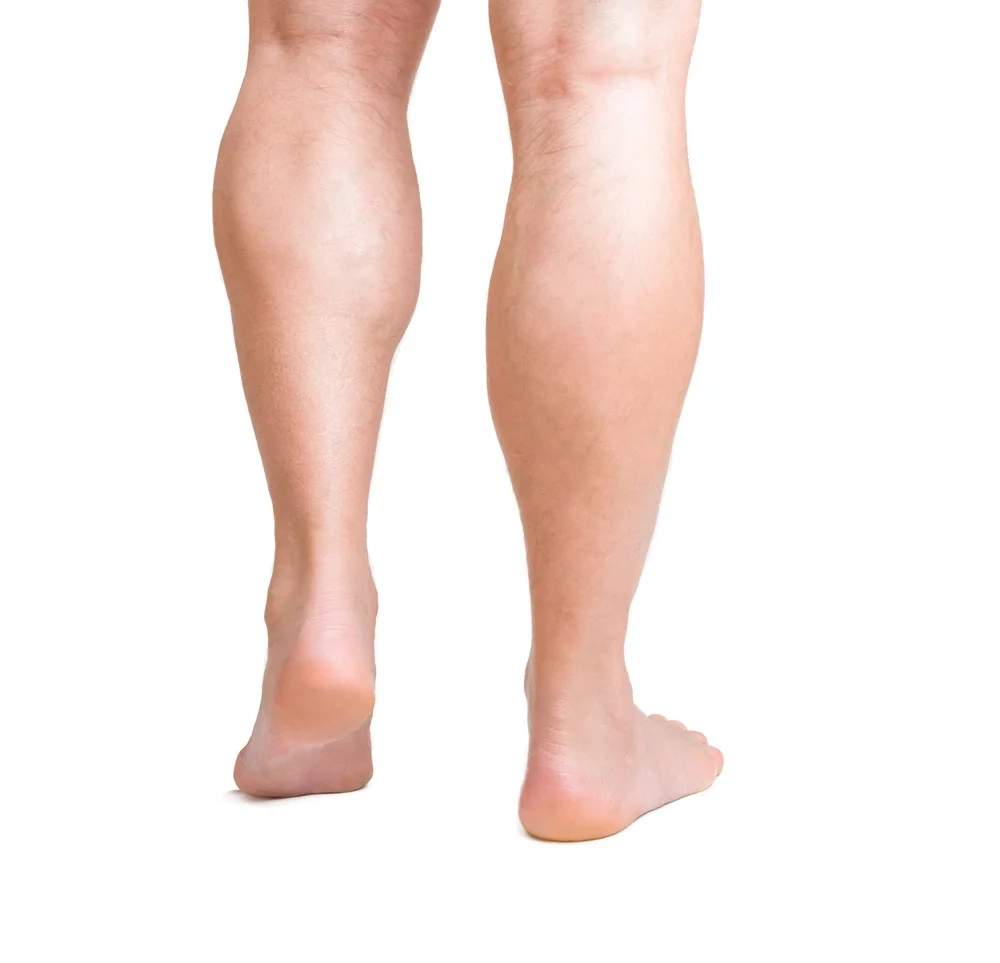 Achieve sculpted, well-defined calves with our calf implant surgery, designed to enhance your lower leg contours and boost your confidence with a natural-looking, proportionate appearance
Achieve sculpted, well-defined calves with our calf implant surgery, designed to enhance your lower leg contours and boost your confidence with a natural-looking, proportionate appearance